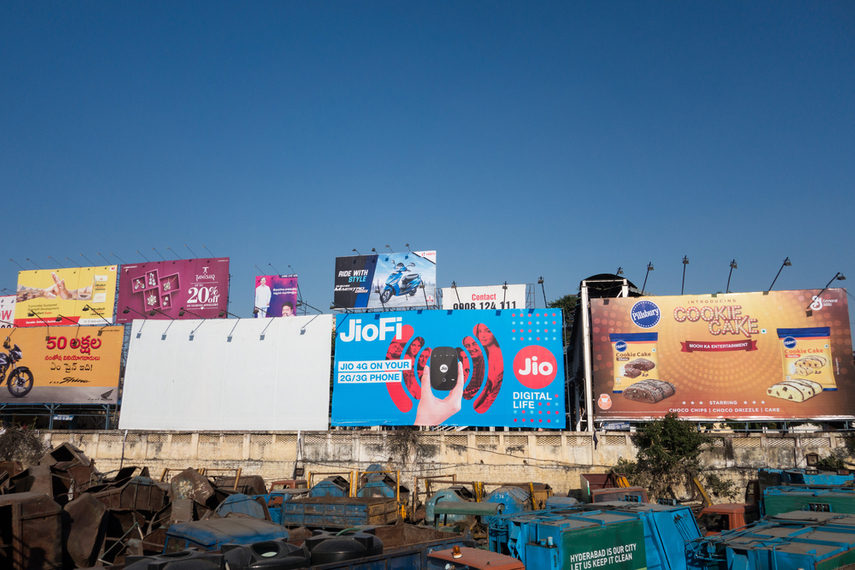many good things going
But stop blindly following western practises
Sometimes lunch meetings have unintended consequences. Anant Rangaswami and I met over lunch recently. I suspect that his journalistic mind seizes such occasions to come up with ideas to dig around for views that otherwise remain private. During the lunch, I appreciated the role played by the trade press as an important part of the industry, giving it a much needed voice. Later when he popped the title of this article and asked me to write, I could hardly refuse.
There are good things, bad things and ugly things about Indian advertising, as indeed in any industry. When my mind wandered around the issues, I decided to give this a filter – I would only write about those issues that I felt had a fundamental impact on the long term health of Indian advertising. I also want to underscore the word “Indian” here. This is about what I see from the ground up, sitting in India. I am not concerned with the view from other parts of the world, looking into India.
There are many good things going on in the industry. For starters, I am impressed by, and proud of the talent, that is driving this industry. I have seen this industry up close in major advertising centres. From a pure talent perspective, Indian advertising deals with more complexity and delivers exceptional value to clients, in many cases better than most other places. Of course the fish does not have a sense of other ponds. It is our job to recognize the talent, and remind ourselves that we are major contributors to other markets by way of talent.
I am encouraged and energized by the continuous improvements in the standards of Creative. Our talent is more confident, our ideation is getting better all the time, and our execution ecosystem is setting new standards. We are an important market not just because of our size, but because our work is setting new standards, and more and more of international work will get done here.
A very Indian quality that our industry has is its ability to function under difficult circumstances with often inadequate infrastructure, and against extraordinarily short lead times, the likes of which simply is not the case in other markets. If the Indian automobile industry is now recognised for ‘frugal engineering’, such qualities are present in the advertising industry too. We must thank our people who deliver against difficult odds, yet do it with good cheer and as a matter of course. We should not take this for granted, and we should acknowledge our people’s efforts. We should not forget to remind our clients how well we perform for them.
Let me move on to comment on a ‘bad’ thing that can negatively affect our industry’s health over the long term. The foremost that comes to mind is how the ownership and control structure of the industry has passed on to multinationals, mostly from the West. Fifteen of the top 20 agencies in India are controlled by multinational networks. I am not stating this as some sort of Indian jingoism. Our own organisation has a minority JV partner with a multinational agency that we respect. I am also conscious that my senior colleagues in the industry are as Indian as they come.
My point is from a particular perspective. The multinational ownership simply means that the top talent in these multinational agencies will necessarily place a higher priority on their multinational clients, as that is the principal agenda of their owners. This automatically means that Indian clients and purely Indian relationships will receive a second level treatment from these agencies. No matter how this view may be protested, this is the commercial reality.
I see this as bad because the top talent in the industry is often not available to Indian advertisers, a fact that has these advertisers on the back foot when facing competition in the marketplace. This was highlighted to me by a major Indian advertiser, who was offered second string agencies by the multinational agencies, since they had conflicts with their multinational clients. This is not the situation in markets like Japan, China and Korea. The ownership and control of the advertising industry in these markets is significantly national, and the national advertisers have priority access to the best of the talent in their countries. Another bad thing is the structural disintegration of the communication service itself. A huge problem that has been created is the separation of the Creative service from the Media service. This is an import from the West, introduced here by the very multinational agency networks who are ruing this very development in their home market. We have a situation where creative agencies have limited knowledge of media and have no access to data, and media agencies have limited line of sight to the thinking behind the creative idea and its possibilities. I have sat in high level meetings with advertisers who threaten, coax and cajole their communication services partners to work together. In fact, some major advertisers in the USA have gone back to creating a single P&L for their agency partners, with all services combined sitting in the same building, under a unified leadership. The sooner Indian advertisers stop blindly following western practises in this regard, the better off they will be. The industry speaks of 360 degrees and integrated communications, while it continues to be structured in a fragmented manner. This needs to be addressed, from the point of view of the long term health of the industry.
As for the ‘ugly’, what jumps up is the extraordinary effort channelled into producing scam ads purely for awards. I have seen written remarks that over 80% of entries in the Abbies is scam work i.e. work created purely for awards often in the name of unrecognisable or non-existent advertisers. This means that such work is not even advertising, because the basic definition of advertising is that it needs a paying sponsor. That some creative people may indulge in this for personal recognition is one thing. That such activities often happen with active support of agency management is sad. That all of this is well known, and it continues to happen year after year, with no adverse consequence for the offenders, is what makes this ugly. How about a simple listing in the trade press of offending agencies and creative people who submit scam ads, to begin with? Perhaps the trade media relating to our industry should play its legitimate role of being a watch dog. This will certainly go a long way.




